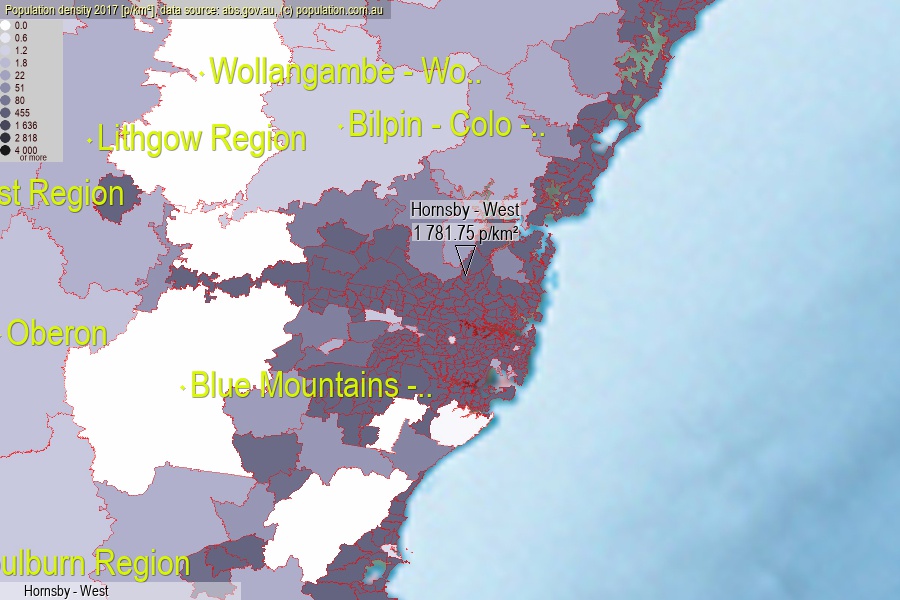 population.com.au
population.com.auLast official estimated population of Hornsby - West (as Statistical Area Level 2) was 11 225 people (on 2017-06-30)[2]. This was 0.05% of total Australian population and 0.141% of NSW population. Area of Hornsby - West is 6.30 km², in this year population density was 1 781.75 p/km² . If population growth rate would be same as in period 2016-2017 (+1.29%/yr), Hornsby - West population in 2025 would be 12 437. [0]



Click to enlarge. Hornsby - West is located in the center of the images.
Population [people], population density [p./km²] and population change [%/year] [2]
View borders » (new window) [4]
[2001-2002] +0.36 %/Yr.
[2002-2003] +0.52 %/Yr.
[2003-2004] +0.22 %/Yr.
[2004-2005] +1.00 %/Yr.
[2005-2006] -0.08 %/Yr.
[2006-2007] +2.06 %/Yr.
[2007-2008] +1.84 %/Yr.
[2008-2009] +0.86 %/Yr.
[2009-2010] +0.90 %/Yr.
[2010-2011] +1.07 %/Yr.
[2011-2012] +1.10 %/Yr.
[2012-2013] +1.18 %/Yr.
[2013-2014] +1.13 %/Yr.
[2014-2015] +0.94 %/Yr.
[2015-2016] +1.16 %/Yr.
[2016-2017] +1.29 %/Yr.
[0] Calculated with linear interpolation from officially estimated population
[1] Read more about SA2 and Australian Statistical Geography Standard (ASGS) on abs.gov.au
[2] Population data from Australian Bureau of Statistics (Population and density: 2017; change: 2016-2017)
[3] Digital Boundaries: Australian Statistical Geography Standard (ASGS) 2016.
[4] Border coordinates are simplifyed using Ramer-Douglas-Peucker algorithm.